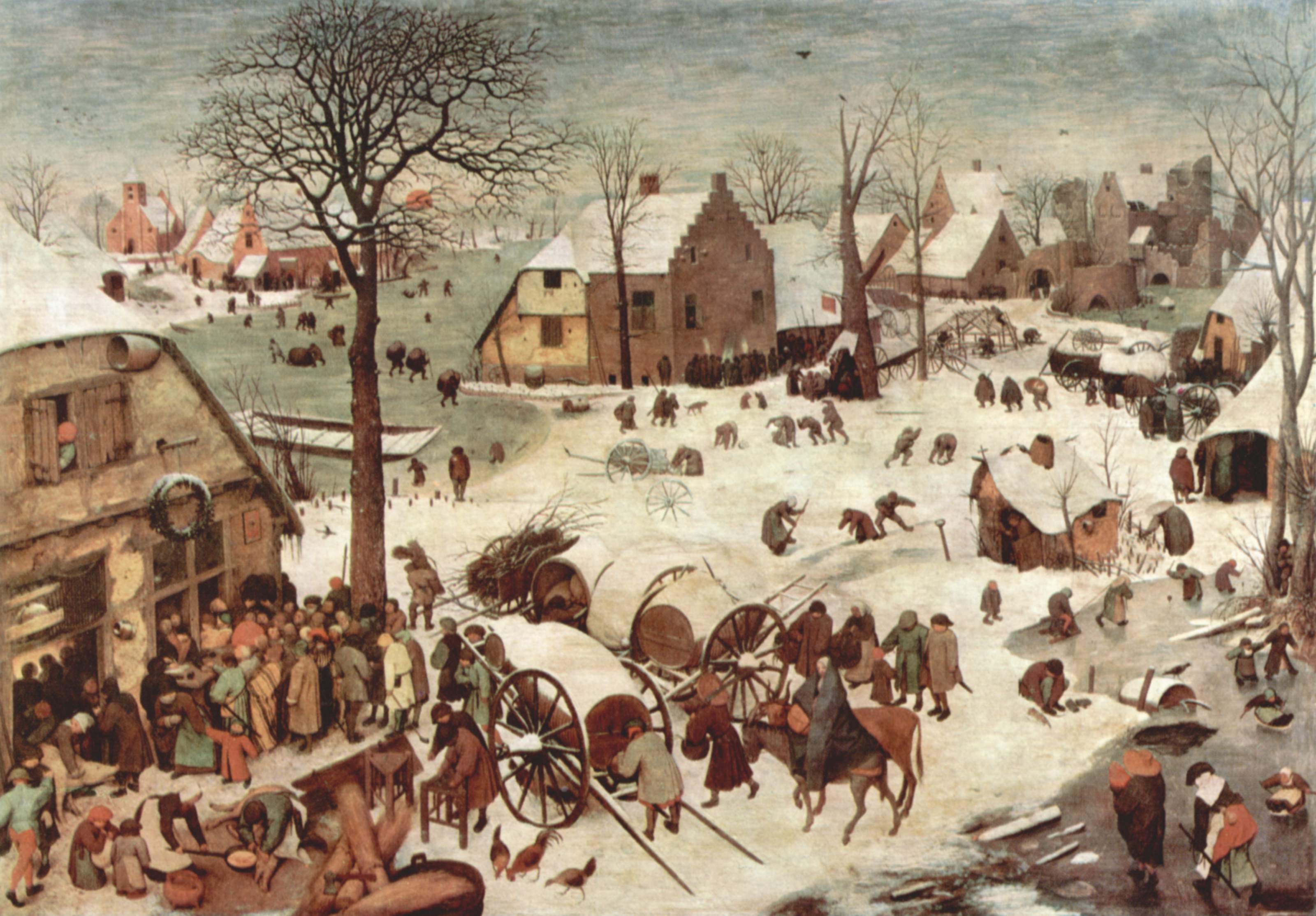The Census at Bethlehem

So, I realize that my last post was not quite seasonal. The painting above is an example of a Dutch landscape painting by Pieter Bruegel, The Census at Bethlehem (1566). I was first introduced to this painting a couple years ago in a Winkel (A type of meeting for pastors to fellowship with other pastors in their area) on vicarage. What intrigues me about this painting is that it is not what you would expect from a religious painting of the census. Anachronistically, this scene is set in a Flemish town in the middle of winter. Mary and Joseph are rather inconspicuously placed at the lower right of center with Joseph pulling the donkey bearing Mary with child. Everyone in this painting is completely oblivious to what is going on through their various activities. The Holy Family is in their midst and they don't even know it. The viewer is not necessarily drawn to the Holy Family because of any focal point that Bruegel has given. If anything you notice the people gathered at the building before you notice them. It has been suggested that this painting is made to make the viewer feel as though he or she is placed is a part of the group that is gathering in a sort of disorienting lack of a focal point (cf.Artcyclopedia).
Perhaps that is the point. It would seem that a common theme throughout the Scriptures is that God continually acts through the humble and common things of the world. It is not as if Mary and Joseph had halos for others to determine who they are. It is not as if God's action is not seen at all. That is, as if sight is useless. God's action in the world is to be seen with the eyes of faith. That faith comes by hearing (i.e. God's promise through His Word). As this story of God's revelation through his Son unfolds, not everyone recognizes who Jesus is unless they see him with faith. Even in his Resurrection, his own disciples are afraid of him until they have faith by his promise of peace. It is not simply a matter of seeing vs. not seeing, it is a matter of seeing with the right kind of eyes.
This, I think, is one of best messages that we can get from this painting. So often we like to think: "If only I was there to see Mary and Joseph and Jesus for myself with my own eyes, then I would "really" believe! But this anachronistic portrayal of the census at Bethlehem shows us that so many people in Jesus' own day saw him and didn't recognize him. It helps us to see that faith does come by hearing. We have that same Word even today that creates faith in Jesus of Nazareth, the Son of God. Though we are different than the disciples and the people of Jesus day in that we have not actually seen him with our own physical eyes, we are no different in terms of faith. Faith in Jesus came by his speaking just as it does for us today. And even in that, he gives us faith to recognize his promises in water or bread and wine.

